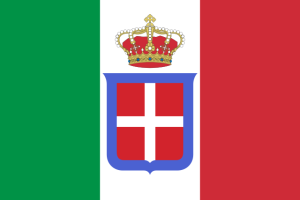
The flag of Italy during World War II was a symbol of a nation torn between its past glory and its present struggles. From the Fascist regime’s rise to power in 1922 to the country’s defeat in 1943, the tricolor flag witnessed the Italian people’s hopes, fears, and dreams.
The Italian flag has three vertical stripes of equal size, colored green, white, and red, from left to right. The colors are said to represent hope (green), faith (white), and charity (red), as well as the Italian landscape, with its green hills, white snow-capped mountains, and red Mediterranean sunsets.
When Benito Mussolini came to power in 1922, he made the flag a symbol of his fascist movement, adding a fasces, a bundle of rods bound together with an ax, in the center of the white stripe. The fasces represented strength through unity and was meant to evoke the Roman Empire’s power.
During World War II, the Italian flag flew over a country that was struggling to maintain its territorial integrity and sovereignty. Italy had been an ally of Germany since 1936, and in June 1940, Mussolini declared war on Britain and France. However, Italy was ill-prepared for war, and its military was ill-equipped and poorly trained. Mussolini hoped that entering the war would bring Italy prestige and territory, but it was not to be.
As the war dragged on, Italy suffered defeat after defeat. In 1943, Allied forces invaded Sicily, and Mussolini’s own Grand Council of Fascism voted to remove him from power. The new Italian government signed an armistice with the Allies, and Italy switched sides, joining the war against Germany.
The Italian flag that had flown over Mussolini’s fascist regime was now carried by soldiers fighting to liberate their own country from foreign occupation. The Italian Resistance, made up of partisans and other anti-fascist groups, used the flag as a symbol of their struggle for freedom and democracy.
In 1946, Italy held a referendum to decide whether to keep the monarchy or become a republic. The tricolor flag became the official flag of the new Italian Republic, and the fasces was removed from the white stripe.
Today, the Italian flag is a proud symbol of a country that has overcome the trauma of war and fascism. It is also a reminder of the sacrifices made by Italian soldiers and civilians during World War II, and of the bravery and determination of those who fought for freedom and democracy.
Trivia: Did you know that the Italian flag was not officially adopted until 1946, after the end of World War II? Before that, Italy had used a number of different flags, including a green, white, and red flag with the coat of arms of the House of Savoy, which ruled Italy from 1861 to 1946. The tricolor flag, however, was widely used during the Risorgimento, the movement for Italian unification in the 19th century, and became a symbol of the Italian nation.
